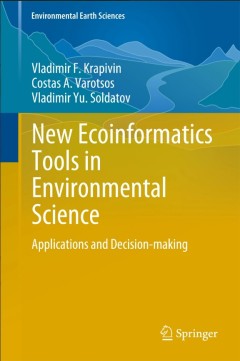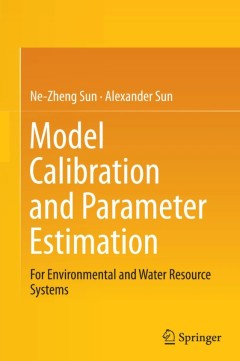Filter by

Introduction to Quantum Information Science
This book presents the basics of quantum information, e.g., foundation of quantum theory, quantum algorithms, quantum entanglement, quantum entropies, quantum coding, quantum error correction and quantum cryptography. The required knowledge is only elementary calculus and linear algebra. This way the book can be understood by undergraduate students. In order to study quantum information, one us…
- Edition
- -
- ISBN/ISSN
- 978-3-662-43502-1
- Collation
- -
- Series Title
- -
- Call Number
- -

A Primer on QSAR/QSPR Modeling Fundamental Concept
This brief goes back to basics and describes the Quantitative structure-activity/property relationships (QSARs/QSPRs) that represent predictive models derived from the application of statistical tools correlating biological activity (including therapeutic and toxic) and properties of chemicals (drugs/toxicants/environmental pollutants) with descriptors representative of molecular structure and/…
- Edition
- -
- ISBN/ISSN
- 978-3-319-17281-1
- Collation
- X, 121
- Series Title
- SpringerBriefs in Molecular Science
- Call Number
- 541 ROY p

A New Direction in Mathematics for Materials Science
This book is the first volume of the SpringerBriefs in the Mathematics of Materials and provides a comprehensive guide to the interaction of mathematics with materials science. The anterior part of the book describes a selected history of materials science as well as the interaction between mathematics and materials in history. The emergence of materials science was itself a result of an interd…
- Edition
- Ed. 1
- ISBN/ISSN
- 978-4-431-55864-4
- Collation
- -
- Series Title
- SpringerBriefs in the Mathematics of Materials
- Call Number
- 514.72 IKE n

Engineering Secure Software and Systems 7th International Symposium, ESSoS 2…
This book constitutes the refereed proceedings of the 7th International Symposium on Engineering Secure Software and Systems, ESSoS 2015, held in Milan, Italy, in March 2015. The 11 full papers presented together with 5 short papers were carefully reviewed and selected from 41 submissions. The symposium features the following topics: formal methods; cloud passwords; machine learning; measuremen…
- Edition
- -
- ISBN/ISSN
- 978-3-319-15618-7
- Collation
- 63 b/w illustrations
- Series Title
- -
- Call Number
- -

New Ecoinformatics Tools in Environmental Science:Applications and Decision-m…
This book provides new insights on the study of global environmental changes using the ecoinformatics tools and the adaptive-evolutionary technology of geoinformation monitoring. The main advantage of this book is that it gathers and presents extensive interdisciplinary expertise in the parameterization of global biogeochemical cycles and other environmental processes in the context of globaliz…
- Edition
- 1
- ISBN/ISSN
- 978-3-319-13977-7
- Collation
- XXXIII, 903
- Series Title
- Environmental Earth Sciences
- Call Number
- -

The Structure and Stability of Persistence Modules
This book is a comprehensive treatment of the theory of persistence modules over the real line. It presents a set of mathematical tools to analyse the structure and to establish the stability of such modules, providing a sound mathematical framework for the study of persistence diagrams. Completely self-contained, this brief introduces the notion of persistence measure and makes extensive use o…
- Edition
- -
- ISBN/ISSN
- 978-3-319-42545-0
- Collation
- -
- Series Title
- -
- Call Number
- -

Model Calibration and Parameter Estimation
This three-part book provides a comprehensive and systematic introduction to these challenging topics such as model calibration, parameter estimation, reliability assessment, and data collection design. Part 1 covers the classical inverse problem for parameter estimation in both deterministic and statistical frameworks, Part 2 is dedicated to system identification, hyperparameter estimation, an…
- Edition
- 1
- ISBN/ISSN
- 978-1-4939-2322-9
- Collation
- XXVIII, 621
- Series Title
- -
- Call Number
- -
 Computer Science, Information & General Works
Computer Science, Information & General Works  Philosophy & Psychology
Philosophy & Psychology  Religion
Religion  Social Sciences
Social Sciences  Language
Language  Pure Science
Pure Science  Applied Sciences
Applied Sciences  Art & Recreation
Art & Recreation  Literature
Literature  History & Geography
History & Geography